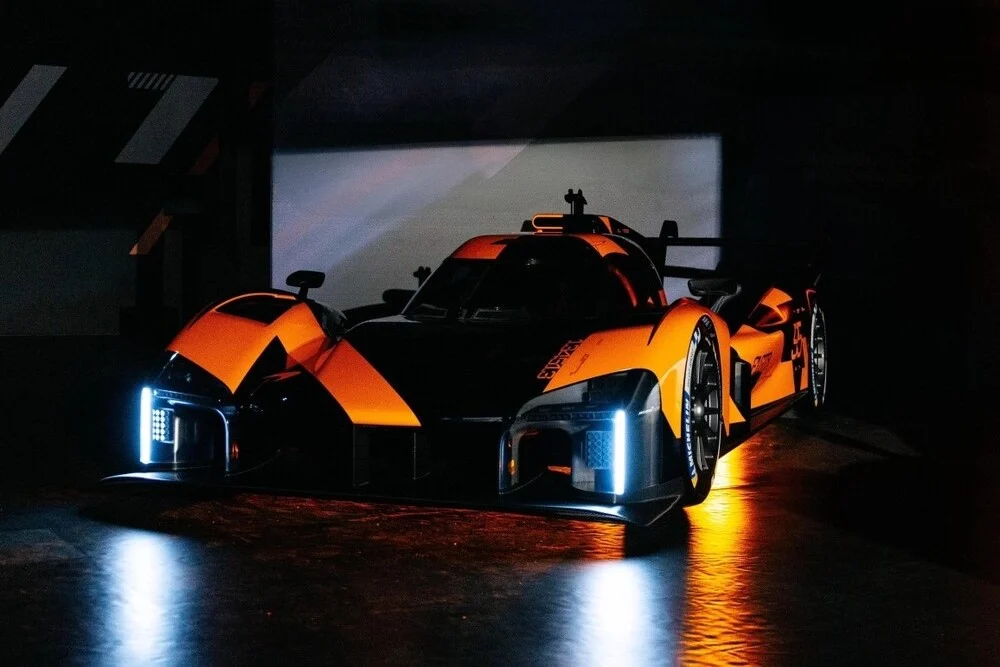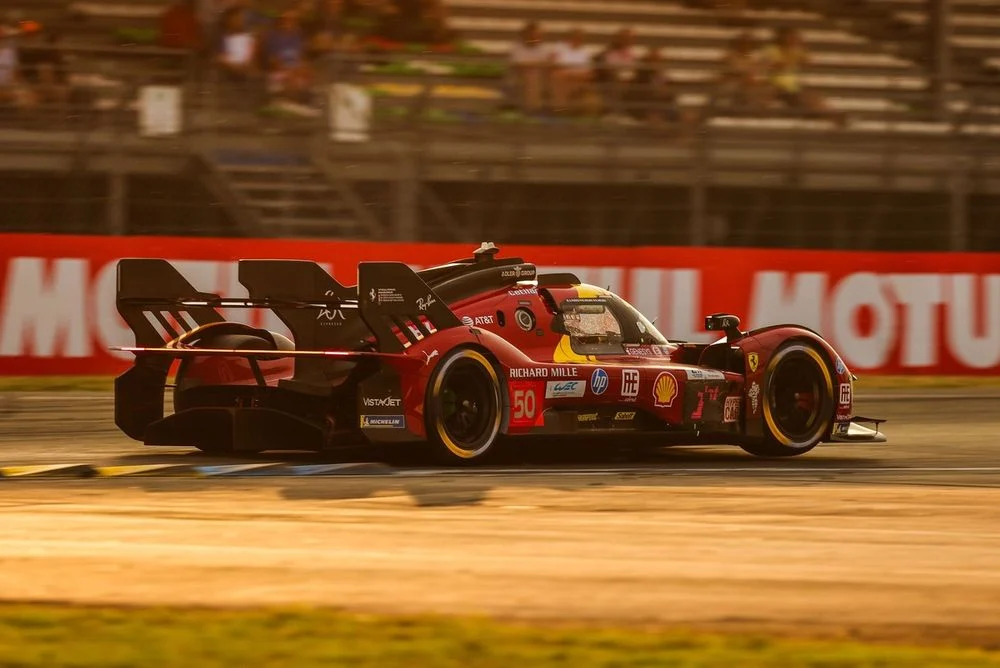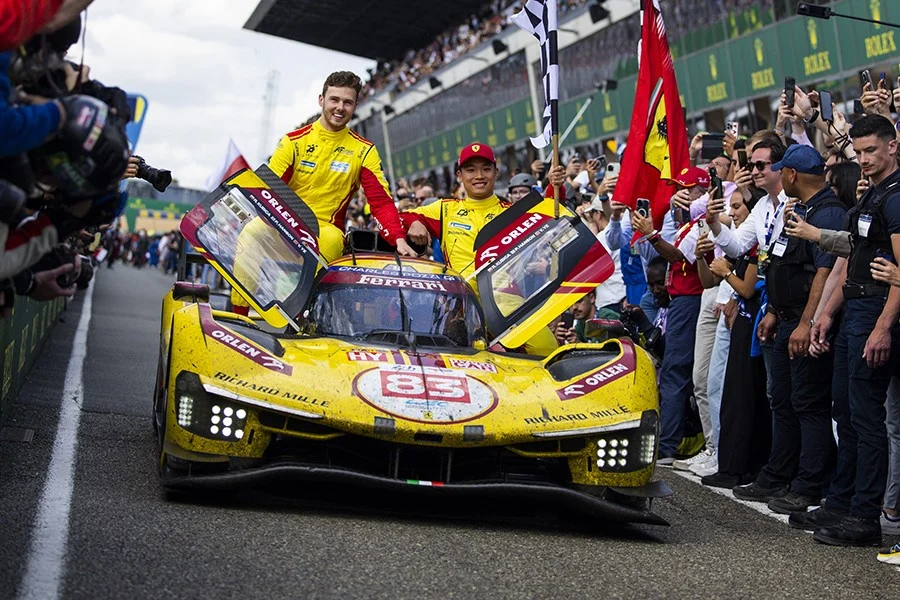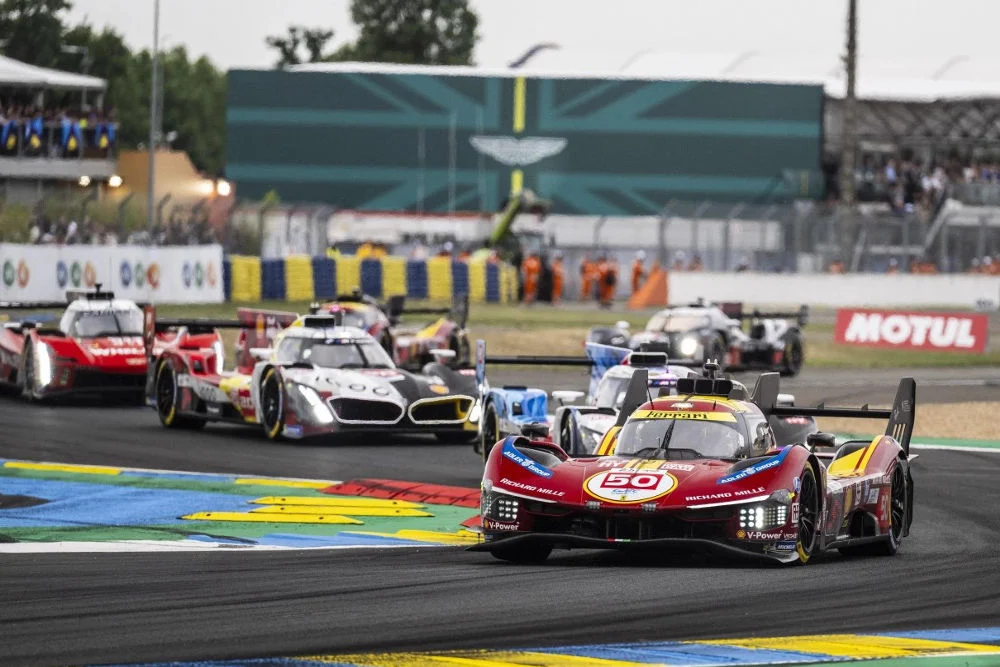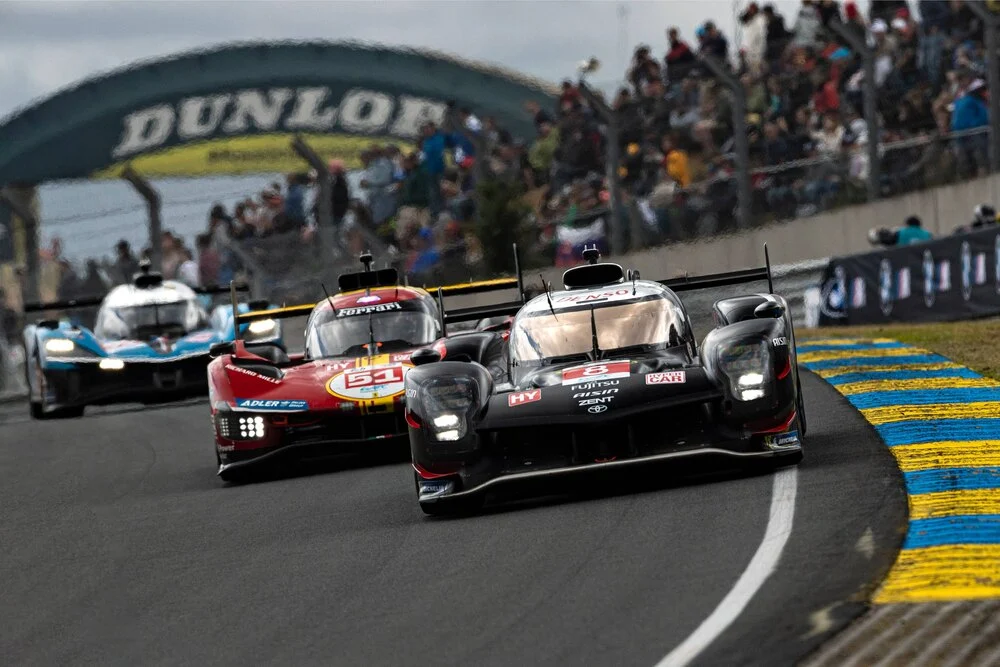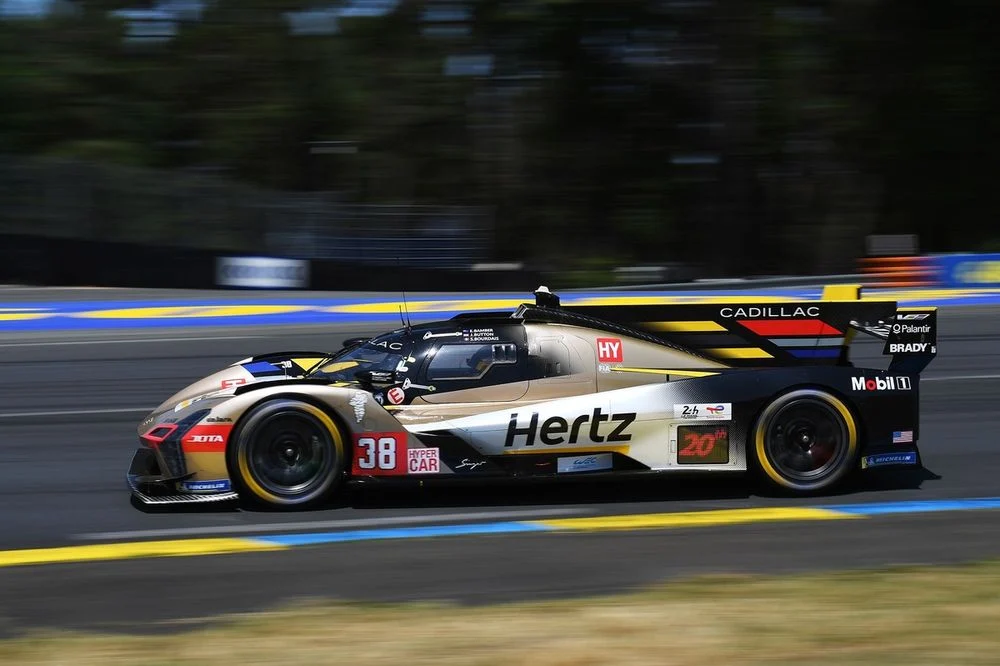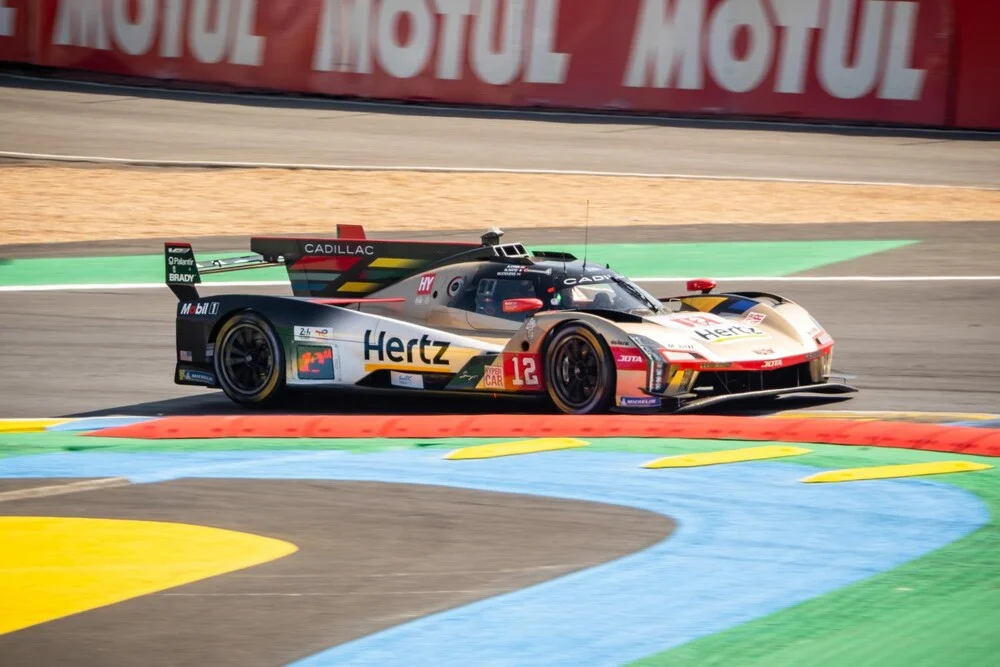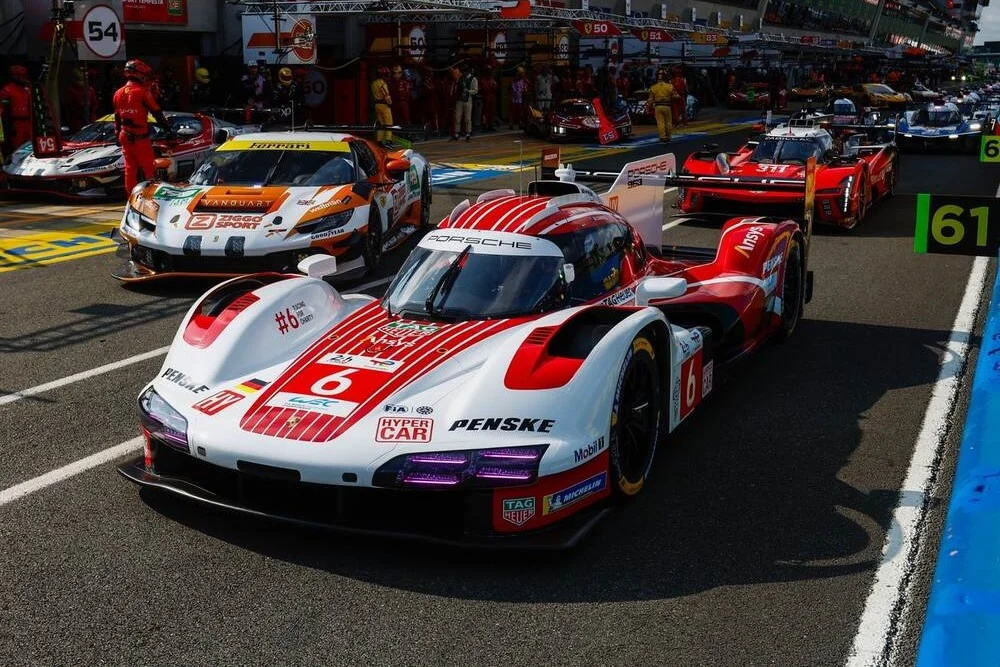Checkout the full Le Mans 24 hours entry list 2025 FIA WEC – 93rd edition of the French endurance classic.
The race scheduled for June 14-15 at Circuit de la Sarthe marks the fourth round of the FIA World Endurance Championship season featuring 62 cars and 186 drivers across the Hypercar, LMP2 and LMGT3 categories.
The Hypercar class stands out as the strongest and most diverse in recent memory featuring a record 21 entries from eight different manufacturers. The field is headlined by the return of Aston Martin to the top class for the first time in over a decade with its Valkyrie AMR-LMH powered by a naturally aspirated V12.
Porsche and Cadillac are the most represented manufacturers in the Hypercar division each fielding four cars. Porsche’s contingent is bolstered by an additional Penske 963 piloted by IMSA championship leaders Nick Tandy and Felipe Nasr as well as reigning Formula E world champion Pascal Wehrlein who made his WEC debut at Spa.
This brings the total number of Porsches in the Hypercar field to four with a fifth on the reserve list in the form of a second Proton Competition 963.
Cadillac’s four-car effort includes two full-season Cadillac Hertz Team JOTA entries, Wayne Taylor Racing’s event debut and a Whelen entry commemorating 75 years since Cadillac’s first Le Mans appearance and 20 years since JOTA’s debut at La Sarthe.
The Hypercar grid is further enriched by the presence of 15 previous Le Mans winners – Toyota, Ferrari, Peugeot, Alpine and BMW – ensuring an intensely competitive battle for overall honors.
In the LMP2 category, 17 Oreca 07 entries have been confirmed in the latest Le Mans 24 hours entry list 2025 featuring a mix of established talents, event debutants and former winners.
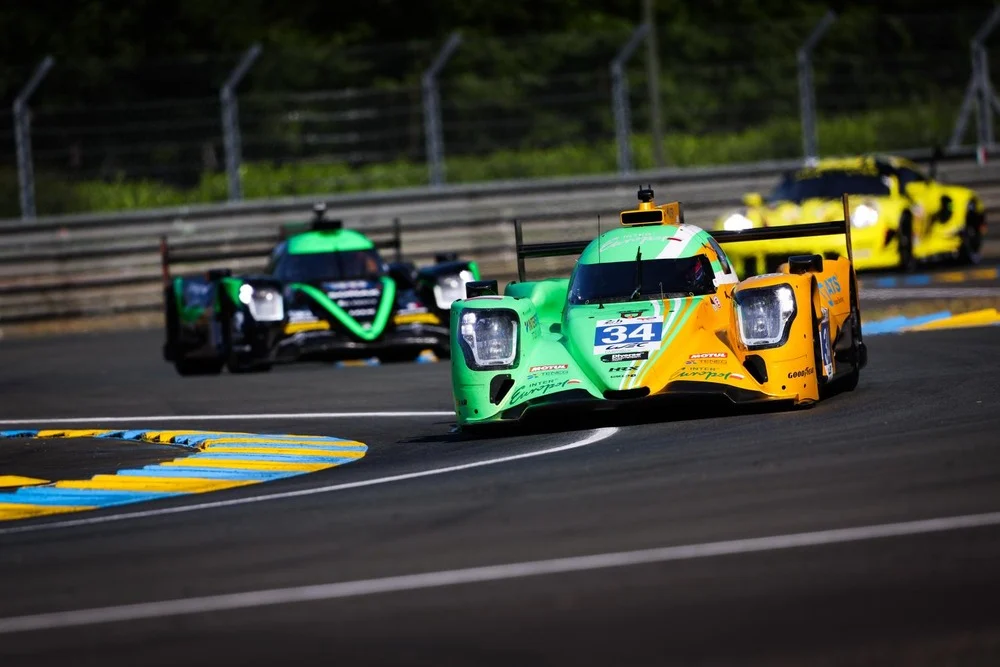
The 2025 FIA WEC LMGT3 class boasts a record 24 entries from nine manufacturers making it the largest GT3 field ever assembled at Circuit de la Sarthe.
Mercedes-AMG makes a highly anticipated return to the race for the first time since 1999 partnering with Iron Lynx for a third entry. Porsche also expands its presence with a third Manthey Porsche 911 GT3 R LMGT3.
Ferrari is the most represented manufacturer in this category fielding five cars including entries for Lilou Wadoux – Ferrari’s first-ever female factory driver and the first woman to win a WEC race in the LMGTE Am category – and Eddie Cheever III – son to former Formula 1 driver and Indy 500 winner.
Full Le Mans 24 hours entry list 2025 FIA WEC
Hypercar category – 21 cars
| No. | Team | Car | Drivers |
|---|---|---|---|
| 007 | Aston Martin THOR | Aston Martin Valkyrie | Harry Tincknell, Tom Gamble, Ross Gunn |
| 009 | Aston Martin THOR | Aston Martin Valkyrie | Alex Riberas, Marco Sorensen, Roman de Angelis |
| 4 | Porsche Penske Motorsport | Porsche 963 | Felipe Nasr, Nick Tandy, Pascal Wehrlein |
| 5 | Porsche Penske Motorsport | Porsche 963 | Julien Andlauer, Michael Christensen, Mathieu Jaminet |
| 6 | Porsche Penske Motorsport | Porsche 963 | Kevin Estre, Laurens Vanthoor, Matt Campbell |
| 7 | Toyota Gazoo Racing | Toyota GR010 Hybrid | Mike Conway, Kamui Kobayashi, Nyck de Vries |
| 8 | Toyota Gazoo Racing | Toyota GR010 Hybrid | Sebastien Buemi, Brendon Hartley, Ryo Hirakawa |
| 12 | Cadillac Hertz team JOTA | Cadillac V-Series.R | Will Stevens, Norman Nato, Alex Lynn |
| 15 | BMW M Team WRT | BMW M Hybrid V8 | Dries Vanthoor, Raffaele Marciello, Kevin Magnussen |
| 20 | BMW M Team WRT | BMW M Hybrid V8 | Rene Rast, Robin Frijns, Sheldon van der Linde |
| 35 | Alpine Endurance Team | Alpine A424 | Paul-Loup Chatin, Ferdinand Habsburg, Charles Milesi |
| 36 | Alpine Endurance team | Alpine A424 | Mick Schumacher, Frederic Makowiecki, Jules Gounon |
| 38 | Cadillac Hertz Team JOTA | Cadillac V-Series.R | Earl Bamber, Sebastien Bourdais, Jenson Button |
| 50 | Ferrari AF Corse | Ferrari 499P | Antonio Fuoco, Nicklas Nielsen, Miguel Molina |
| 51 | Ferrari AF Corse | Ferrari 499P | Alessandro Pier Guidi, James Calado, Antonio Giovinazzi |
| 83 | AF Corse | Ferrari 499P | Robert Kubica, Yifei Ye, Phil Hanson |
| 93 | Peugeot TotalEnergies | Peugeot 9X8 | Paul di Resta, Mikkel Jensen, Jean-Eric Vergne |
| 94 | Peugeot TotalEnergies | Peugeot 9X8 | Loic Duval, Malthe Jakobsen, Stoffel Vandoorne |
| 99 | Proton Competition | Porsche 963 | Neel Jani, Nicolas Pino, Nicolas Varrone |
| 101 | Cadillac Wayne Taylor Racing | Cadillac V-Series.R | Ricky Taylor, Jordan Taylor, Filipe Albuquerque |
| 311 | Cadillac Whelen (Action Express Racing) | Cadillac V-Series.R | Jack Aitken, Felipe Drugovich, Frederik Vesti |
LMP2 category – 17 cars
| No. | Team | Car | Drivers |
|---|---|---|---|
| 9 | Iron Lynx-Proton | Oreca 07-Gibson | Jonas Ried, Maceo Capietto, Reshad de Gerus |
| 11 | Proton Competition (Pro/Am) | Oreca 07-Gibson | Giorgio Roda, Rene Binder, Bent Viscaal |
| 16 | RLR M Sport (Pro/Am) | Oreca 07-Gibson | Michael Jensen, Ryan Cullen, Patrick Pilet |
| 18 | IDEC Sport | Oreca 07-Gibson | Jamie Chadwick, Andre Lotterer, Mathys Jaubert |
| 22 | United Autosports | Oreca 07-Gibson | Renger van der Zande, Pietro Fittipaldi, David Heinemeier Hansson |
| 23 | United Autosports (Pro/Am) | Oreca 07-Gibson | Daniel Schneider, Oliver Jarvis, Ben Hanley |
| 24 | Nielsen Racing (Pro/Am) | Oreca 07-Gibson | Naveen Rao, Cem Bolukbasi, Colin Braun |
| 25 | Algarve Pro Racing | Oreca 07-Gibson | Matthias Kaiser, Lorenzo Fluxa, Theo Pourchaire |
| 28 | IDEC Sport | Oreca 07-Gibson | Paul Lafargue, Jon van Uitert, Sebastian Alvarez |
| 29 | TDS Racing (Pro/Am) | Oreca 07-Gibson | Rodrigo Sales, Mathias Beche, Clement Novalak |
| 34 | Inter Europol Competition (Pro/Am) | Oreca 07-Gibson | Nicholas Boulle, Jean-Baptiste Simmenauer, Luca Ghiotto |
| 37 | CLR Pure Rxcing | Oreca 07-Gibson | Aliaksandr Malykhin, Tom Blomqvist, Tristan Vautier |
| 43 | Inter Europol Competition | Oreca 07-Gibson | Jakub Smiechowski, Tom Dillmann, Nick Yelloly |
| 45 | Algarve Pro Racing (Pro/Am) | Oreca 07-Gibson | George Kurtz, Nicky Catsburg, Alexander Quinn |
| 48 | VDS Panis Racing | Oreca 07-Gibson | Oliver Gray, Franck Perera, Esteban Masson |
| 155 | AF Corse (Pro/Am) | Oreca 07-Gibson | Francois Perrodo, Antonio Felix da Costa, Matthieu Vaxiviere |
| 199 | AO by TF (Pro/Am) | Oreca 07-Gibson | PJ Hyett, Dane Cameron, Louis Deletraz |
LMGT3 category – 24 cars
| No. | Team | Car | Drivers |
|---|---|---|---|
| 10 | Racing Spirit of LeMan | Aston Martin Vantage AMR LMGT3 | Derek Deboer, Eduardo Barrichello, Valentin Hasse-Clot |
| 13 | AWA Racing | Corvette Z06 LMGT3.R | Orey Fidani, Lars Kern, Matt Bell |
| 21 | Vista AF Corse | Ferrari 296 LMGT3 | Francois Heriau, Simon Mann, Alessio Rovera |
| 27 | Heart of Racing | Aston Martin Vantage AMR LMGT3 | Ian James, Zacharie Robichon, Mattia Drudi |
| 31 | The Bend Team WRT | BMW M4 LMGT3 | Yasser Shahin, Timur Boguslavskiy, Augusto Farfus |
| 33 | TF Sport | Corvette Z06 LMGT3.R | Ben Keating, Jonny Edgar, Daniel Juncadella |
| 46 | Team WRT | BMW M4 LMGT3 | Ahmad Al Harthy, Valentino Rossi, Kelvin van der Linde |
| 54 | Vista AF Corse | Ferrari 296 LMGT3 | Thomas Flohr, Francesco Castellacci, Davide Rigon |
| 57 | Kessel Racing | Ferrari 296 LMGT3 | Takeshi Kimura, Daniel Serra, Casper Stevenson |
| 59 | United Autosports | McLaren 720S LMGT3 Evo | James Cottingham, Gregoire Saucy, Sebastien Baud |
| 60 | Iron Lynx | Mercedes-AMG LMGT3 | Claudio Schiavoni, Matteo Cressoni, Matteo Cairoli |
| 61 | Iron Lynx | Mercedes-AMG LMGT3 | Christian Ried, Lin Hodenius, Maxime Martin |
| 63 | Iron Lynx | Mercedes-AMG LMGT3 | Stephen Grove, Brenton Grove, Luca Stolz |
| 77 | Proton Competition | Ford Mustang LMGT3 | Bernardo Sousa, Ben Tuck, Ben Barker |
| 78 | Akkodis ASP Team | Lexus RC F LMGT3 | Arnold Robin, Ben Barnicoat, Finn Gehrsitz |
| 81 | TF Sport | Corvette Z06 LMGT3.R | Tom van Rompuy, Rui Andrade, Charlie Eastwood |
| 85 | Iron Dames | Porsche 911 GT3 R LMGT3 | Celia Martin, Rahel Frey, Michelle Gatting |
| 87 | Akkodis ASP Team | Lexus RC F LMGT3 | Petru Umbrarescu, Jose Maria Lopez, Clemens Schmid |
| 88 | Proton Competition | Ford Mustang LMGT3 | Stefano Gattuso, Giammarco Levorato, Dennis Olsen |
| 90 | Manthey | Porsche 911 GT3 R LMGT3 | Antares Au, Loek Hartog, Klaus Bachler |
| 92 | Manthey 1st Phorm | Porsche 911 GT3 R LMGT3 | Ryan Hardwick, Riccardo Pera, Richard Lietz |
| 95 | United Autosports | McLaren 720S LMGT3 Evo | Darren Leung, Sean Gelael, Marino Sato |
| 150 | Richard Mille AF Corse | Ferrari 296 LMGT3 | Custodio Toledo, Lilou Wadoux, Riccardo Agostini |
| 193 | Ziggo Sport Tempesta | Ferrari 296 LMGT3 | Jonathan Hui, Christopher Froggatt, Edward Cheever |


